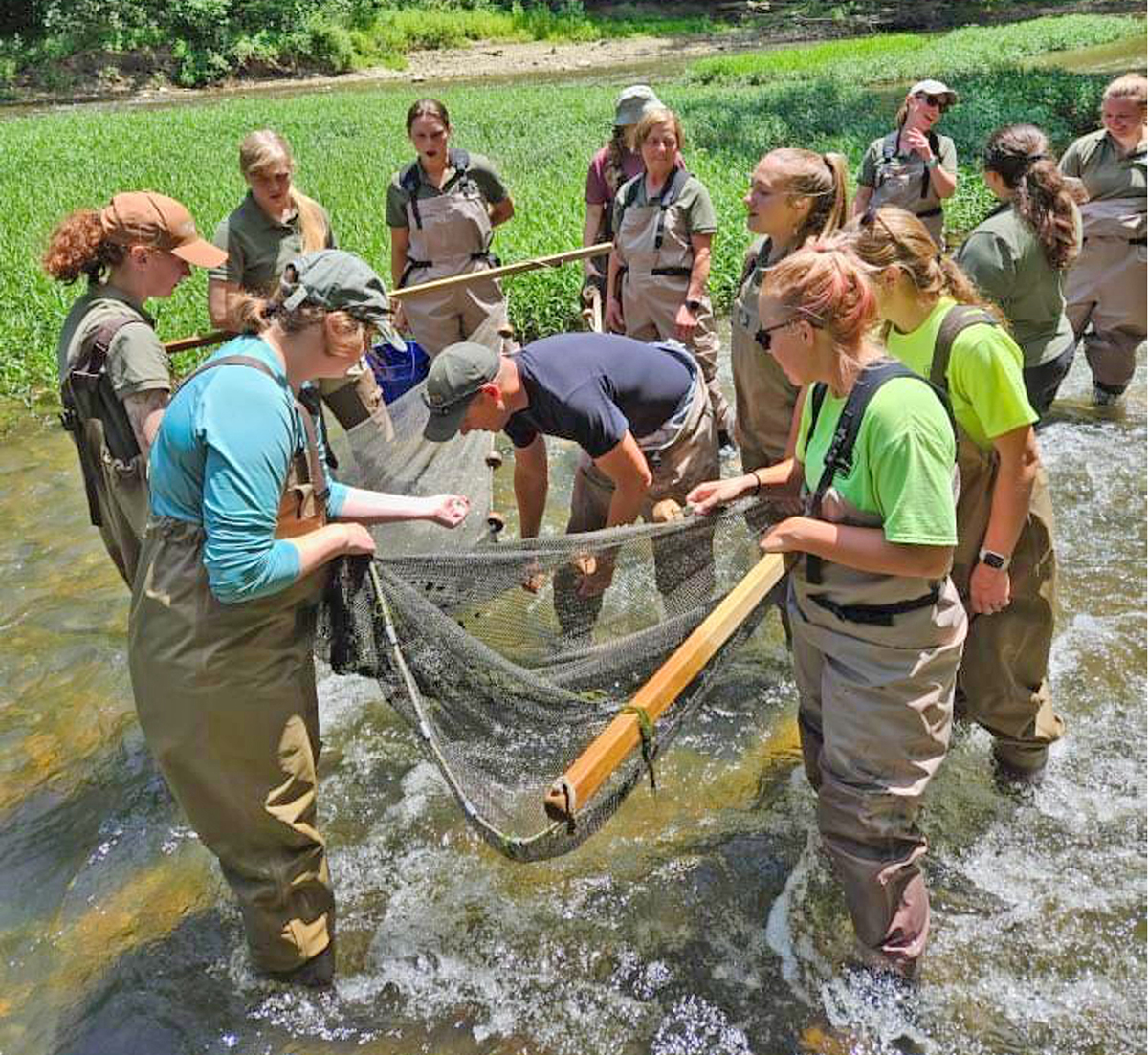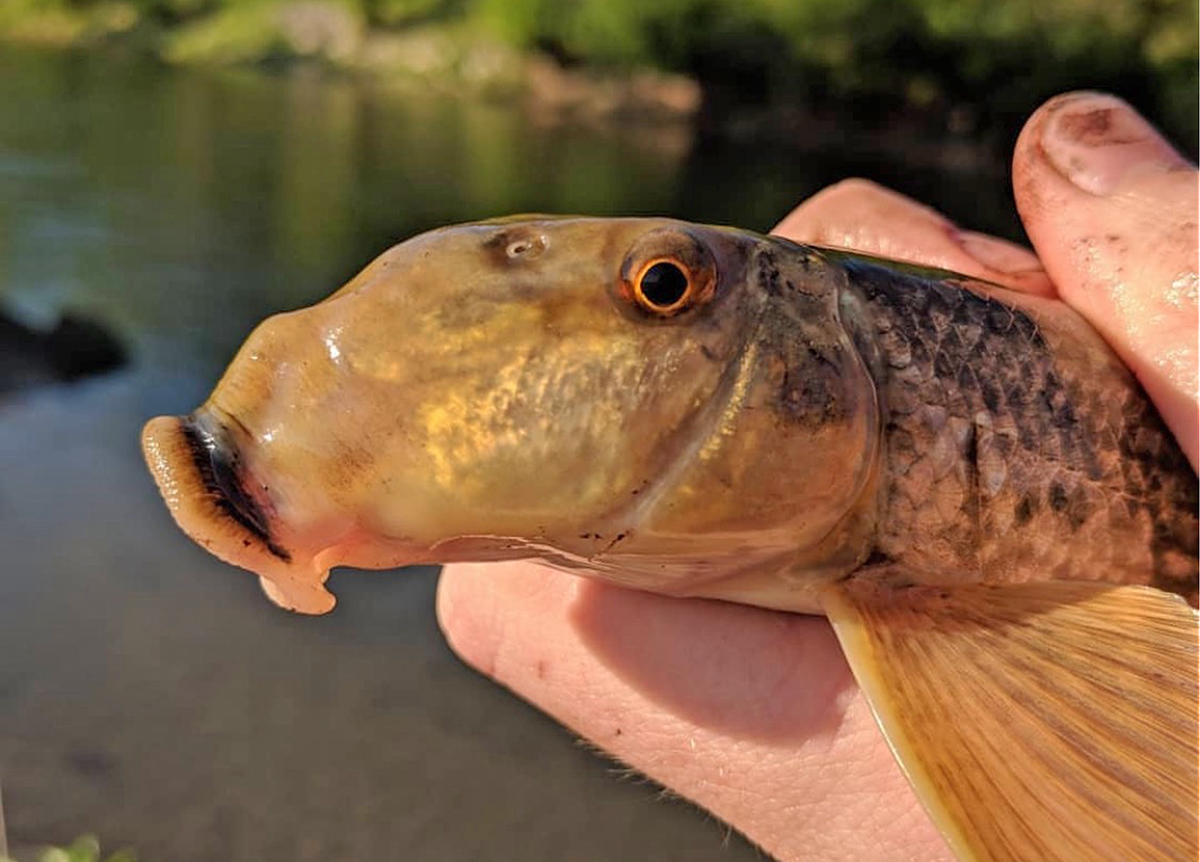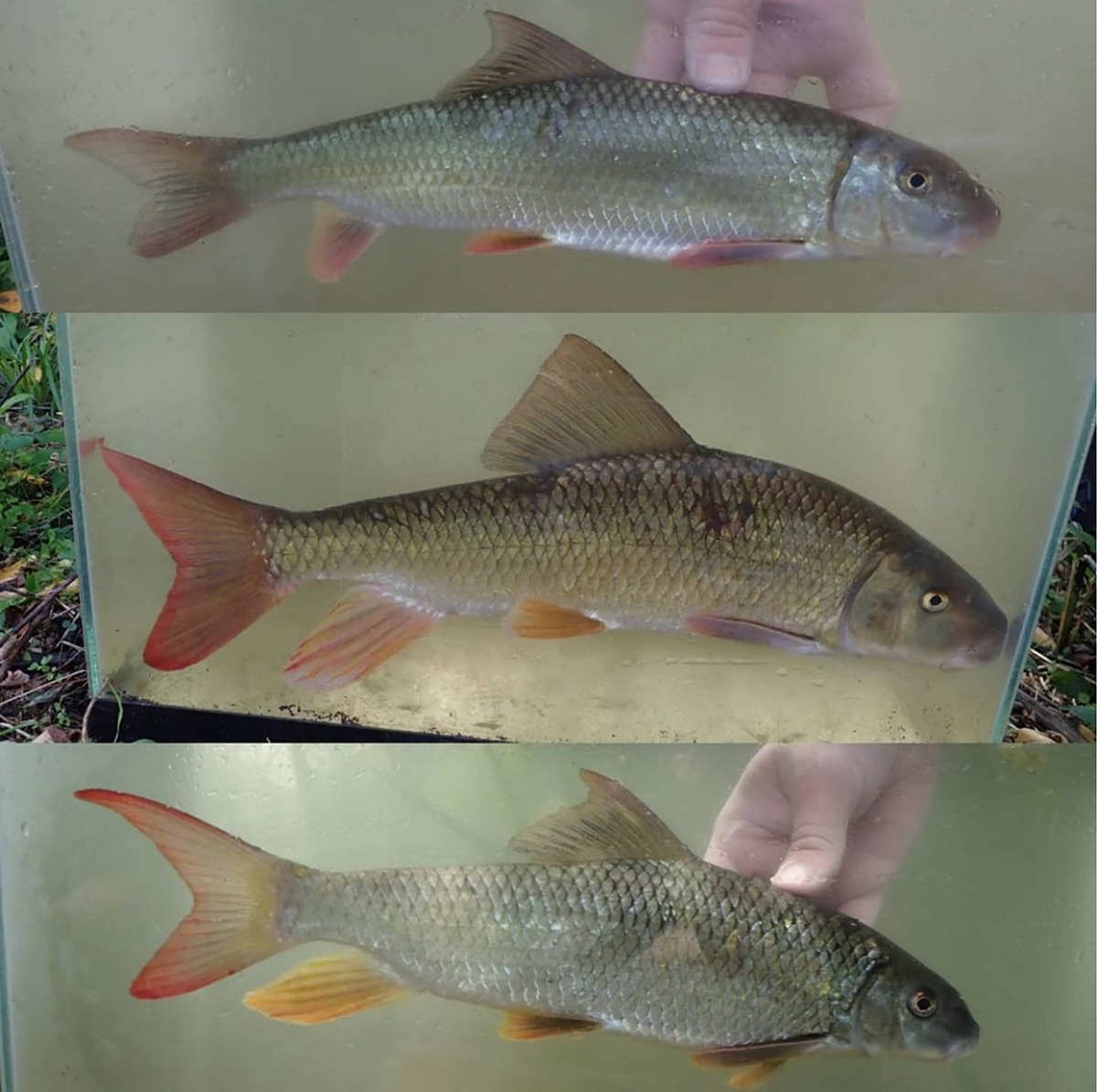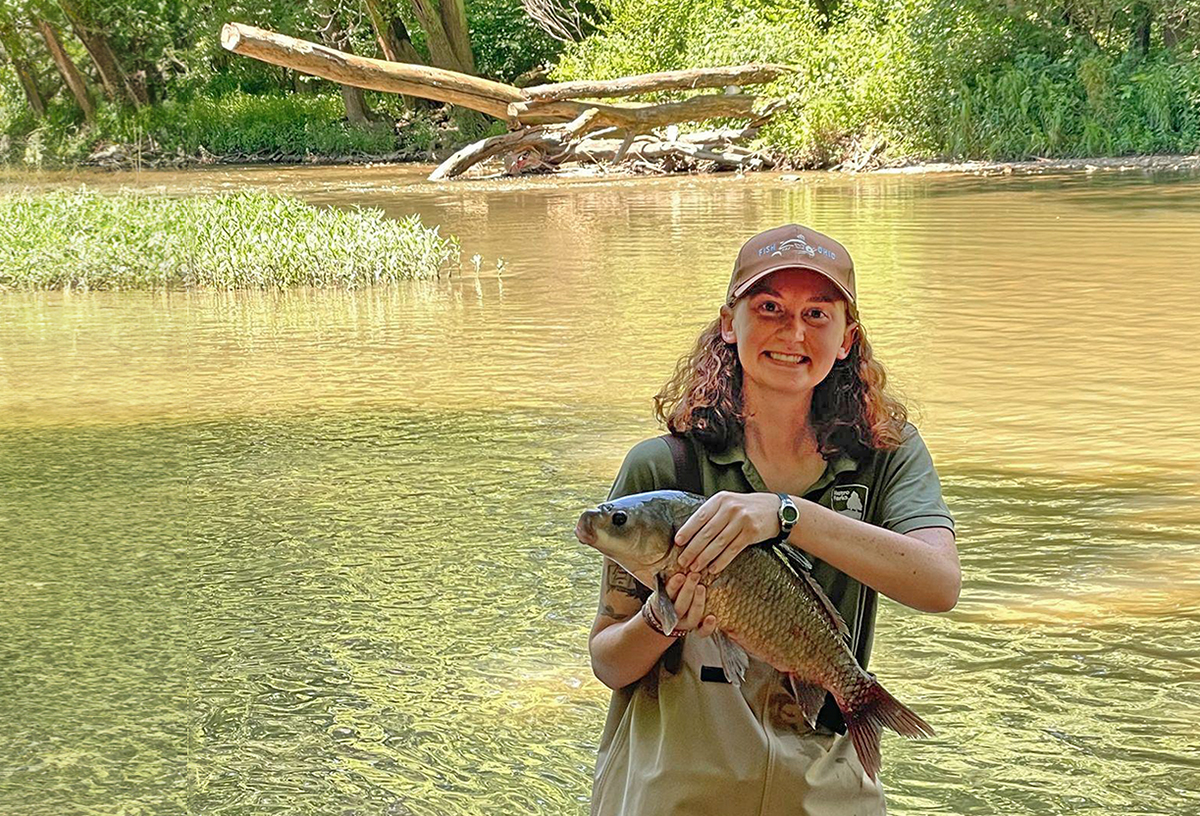ELAINE HALL
Assistant Resource Manager/Darby Watershed Coordinator
If you have had the chance to go fishing or kick seining, maybe even at a Metro Parks program, then you’ve probably come across a few slivery-ish fish. Last month Battelle Darby Creek and other park district naturalist staff had the chance to dive into the world of some of our seemingly nondescript non-gamefish; minnows and carp (cyprinid family) and suckers (catostomidae family).
Our very own Aquatic Ecologist Tony Minamyer and Cameron Layne, Diversity Biologist of WVDNR Non-gamefish and chair member of the Ohio Chapter of Native Fish Coalition, led a workshop for our naturalists, covering the key field ID for these groups of fishes. Naturally, we held our workshop at Battelle Darby Creek, where we could search the waters of Big Darby Creek in expectation of finding plenty of fish.

In the state of Ohio you’ll run into approximately 67 species of minnows, carp and suckers. Some species are easier to recognize due to their uniqueness, such as the northern hog sucker (Hypentelium nigricans). They have a distinctive large flattened bony head with a concave forehead, and a “vacuum cleaner” mouth that projects out from the face farther than any of our other suckers.

Other fish require a closer eye to identify them. So close as to count the number of rays in a fin, the number of scales that run down the fish’s lateral line, and yes—even looking at lips!
Suckers
We have 20 sucker species in Ohio. Suckers play an important role in our river ecosystems, eating many types of crustaceans, immature insects (such as caddisflies, mayflies and midges), fish eggs and larvae, small molluscs and crayfishes. Young bass have even formed self-preserving relationships with suckers. They have learned that if they defend and follow a hog sucker as it flips rocks, insects will become dislodged leading to a quick meal for the bass. Some of the suckers also tell us if our watershed is in good shape. Redhorse suckers are intolerant to pollution. Their tight gill covers do not allow them to flare and clear their gills of excessive siltation, which is commonly a result of runoff from stormwaters.
All sucker fish have downward-directed mouths that create a vacuum pump action to “suck up” small organisms. The word Catostomidae is derived from Greek roots meaning “downward” and “mouth.” Oh, and they have taste buds all over their lips that allow them to taste their food before they vacuum it up off the creek bottom.
The trickiest group to identify are the redhorse (genus moxostoma). With hydrodynamic bodies and silvery to golden scales, these long-lived species can generally be split into two groups at first glance by looking at the color of the tail. The most commonly seen suckers in our creeks with a red tail indicates that it is a smallmouth or river redhorse. Grayish to slate colored tails belong to black, golden and silver redhorse fish.

The next way to decipher these fish is by looking at the lips. Each has a unique lip shape and position.
The black redhorse’s lower lip forms a much straighter line than the other species, and the lower lip is also much thicker than the upper lip. The “nose” of the fish also seems to overhang, setting the lips farther back. The golden redhorse has a curved lower lip and the outer corners appear to form a v-shape. Between our two red-tailed species to occur in Franklin county waters, the size difference of the head and lips should clue you into which is the river versus the smallmouth.

Having an opportunity to get these fish in hand and practice ID skills is the best way to begin to distinguish them from one another. Recognizing each species and all the little differences paints a bigger picture of the diversity in our creek ecosystems and can tell us about their health.
During the workshop, we caught and identified 33 different species of fish: longnose gar, smallmouth buffalo, smallmouth redhorse, golden redhorse, black redhorse, common carp, northern hog sucker, bluegill, green sunfish, longear sunfish, black crappie, white crappie, rock bass, largemouth bass, smallmouth bass, stonecat, bigeye chub, streamline chub, silver shiner, rosyface shiner, mimic shiner, spotfin shiner, striped shiner, bluntnose minnow, central stoneroller, tippecanoe darter, bluebreast darter, banded darter, rainbow darter, variegate darter, greenside darter, mottled sculpin, gizzard shad.

